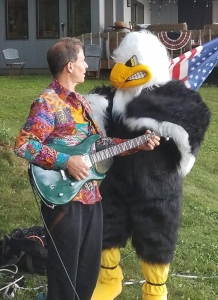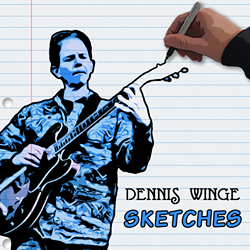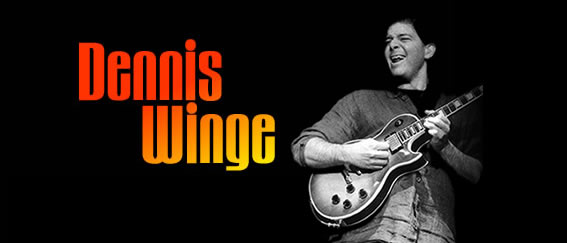Notes of Narration: The Captivating Art of Musical Storytelling
In the realm of music, storytelling through solo guitar and voice performances transcends mere entertainment; it becomes a profound expression of human experience. This art form is unique in its ability to convey complex narratives and emotions, weaving together melodies, harmonies, and lyrics into a cohesive and engaging story. This blog post explores how solo guitar and voice performances harness the power of musical storytelling, highlighting the critical elements that make this medium so compelling.
ability to convey complex narratives and emotions, weaving together melodies, harmonies, and lyrics into a cohesive and engaging story. This blog post explores how solo guitar and voice performances harness the power of musical storytelling, highlighting the critical elements that make this medium so compelling.
The Narrator in the Notes
In solo performances, the guitar serves as both the backdrop and the guide for the narrative journey. The instrument’s range of tones and dynamics allows it to mimic the ebbs and flows of a story, providing a foundation upon which the narrative unfolds. The voice, meanwhile, acts as the primary narrator, conveying the emotional and lyrical content. The interplay between these two elements creates a rich tapestry of sound that can express a wide range of emotions, from joy to sorrow, excitement to contemplation.
Music’s universal language transcends cultural and linguistic barriers, making it an ideal medium for storytelling. Each note and chord progression can evoke specific moods and atmospheres, setting the scene for the narrative. For instance, minor chords can create a sense of melancholy or tension, while major chords might convey happiness or resolution. This emotional resonance is a cornerstone of musical storytelling, as it allows performers to communicate deeply personal and universal themes.
Personalizing the Performance
One of the unique aspects of my approach to musical storytelling is the way I personalize the lyrics and delivery of each song. When performing, I aim to make the lyrics my own, as if I had written them. This personal connection helps me deliver the song as if the audience is hearing it for the first time, which, in a sense, they are. Even if they’ve heard the song before, they’ve never heard my particular rendition—performed in my key, with my voice, and imbued with my unique inflections. This personalized delivery creates a fresh and intimate experience, allowing me to connect more deeply with the audience.
Inflection and Dynamics
 The use of vocal inflection and dynamic range is crucial in conveying the nuances of a story. These elements help to emphasize specific parts of the narrative, guiding the listener’s emotional response. For example, a soft, whispering vocal delivery can create an intimate or suspenseful atmosphere, while a powerful, belted passage can express a climactic moment of the story. The dynamics of the guitar, from gentle fingerpicking to aggressive strumming, also play a vital role in shaping the narrative’s flow.
The use of vocal inflection and dynamic range is crucial in conveying the nuances of a story. These elements help to emphasize specific parts of the narrative, guiding the listener’s emotional response. For example, a soft, whispering vocal delivery can create an intimate or suspenseful atmosphere, while a powerful, belted passage can express a climactic moment of the story. The dynamics of the guitar, from gentle fingerpicking to aggressive strumming, also play a vital role in shaping the narrative’s flow.
In solo guitar and voice performances, the artist’s control over these elements is paramount. Unlike in a band setting, where multiple instruments contribute to the dynamics and texture, the solo performer must rely on their voice and guitar to maintain the listener’s interest and convey the full emotional spectrum of the story. This requires a deep understanding of the narrative’s emotional arc and the technical skills to execute it effectively.
The Art of Improvisation
As a jazz musician, I perceive the instrumental playing, especially during improvisatory sections, as an integral part of the storytelling. Improvisation is not just about “playing to fill up space”; it is a journey unto itself. Each improvised solo is a spontaneous creation that adds a new dimension to the narrative. It’s a way to explore and express the emotions and themes of the song in real-time, making each performance unique.
I teach my students the importance of building a solo using techniques such as tension and release, which can captivate the audience’s attention and evoke a wide range of emotions. By understanding the dynamics of tension—using dissonant or unexpected notes—and resolution—returning to consonant, familiar sounds—musicians can craft solos that take listeners on an emotional journey. This deepens the connection between the performer and the audience, making the experience more immersive and memorable.
A Tapestry of Experiences
The stories told through music often draw from a rich tapestry of human experiences. Themes of love, loss, joy, and despair are common, as they resonate with a broad audience. Each performance is a journey that transports listeners into different emotional and experiential realms. The simplicity of a solo setup, with just a guitar and voice, can strip a song down to its essence, highlighting the raw emotion and narrative core.
Moreover, the flexibility of the solo format allows for a wide range of stylistic approaches. Artists can incorporate elements from various genres, such as folk, blues, jazz, or classical, to enhance their storytelling. This genre-blending not only enriches the narrative but also provides a fresh perspective on familiar stories, making them feel new and relevant.
storytelling. This genre-blending not only enriches the narrative but also provides a fresh perspective on familiar stories, making them feel new and relevant.
The Unforgettable Impact
The impact of a well-told musical story can be profound and lasting. Iconic performances often become defining moments for artists, resonating with audiences long after the music has stopped. The storytelling aspect of music has the power to connect deeply with listeners, evoking memories and emotions that are both personal and collective.
Musical storytelling also serves as a bridge between the artist and the audience. It creates a shared experience that can transcend the boundaries of the stage, fostering a sense of community and understanding. This shared experience is particularly powerful in live performances, where the immediacy of the music and the presence of the artist enhance the emotional impact.
Conclusion
Musical storytelling through solo guitar and voice is a unique and captivating art form that offers endless possibilities for expression. By mastering the interplay of guitar and voice, and by harnessing the power of inflection, dynamics, and emotional delivery, artists can create performances that are not only entertaining but also deeply moving and thought-provoking. These performances remind us of the timeless power of music to convey stories and emotions, connecting us to the shared human experience.
For those interested in exploring this art form further, whether as performers or listeners, the world of musical storytelling offers a rich and rewarding journey. Embrace the stories within the music and allow them to inspire and transform your own experiences.
—
Book a free music consultation if you want to talk about live music for your event, or use the contact page.



